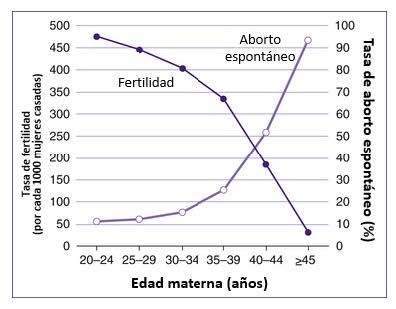The fact that fertility declines as women age is due to several factors. Firstly, female germ cells do not replicate during adult life, and the number of oocytes available (ovarian reserve) gradually depletes from birth.
Secondly, the quality of these oocytes decreases with age, mainly due to an increase in the rate of aneuploidy in the oocyte. This higher rate of aneuploidy is chiefly due to an increase in the frequency of errors committed by agents involved in the regulation of the meiotic spindle assembly. The increase in chromosomal abnormalities within the oocyte leads to a higher rate of miscarriage and a higher risk of chromosomopathies in the foetus. Figure 7 graphically depicts the decline in fertility and the increase in the miscarriage rate as the age of the woman increases. Both rates vary exponentially, so fertility loss is especially critical from a mean maternal age of 37 years onwards.
- About us
- Your case
YOU’RE TRYING FOR A BABY
YOU WANT TO HAVE A CHILD IN THE FUTURE
- Treatments and techniques
Testing
Assisted reproduction
- Frequently asked
- Finance
- Contact




